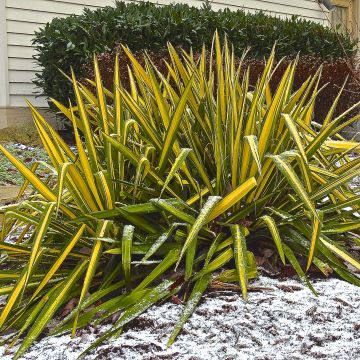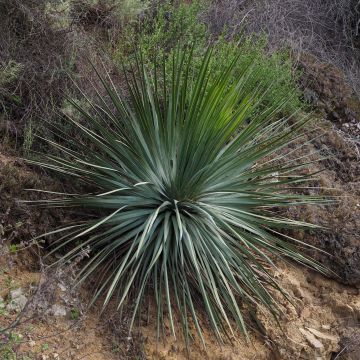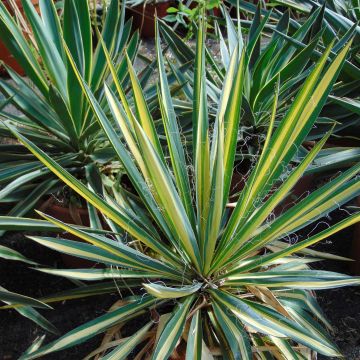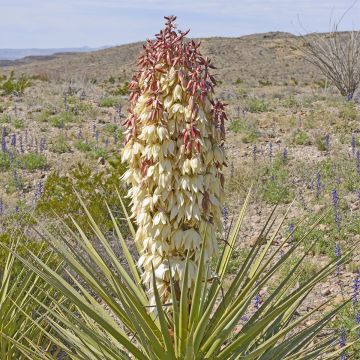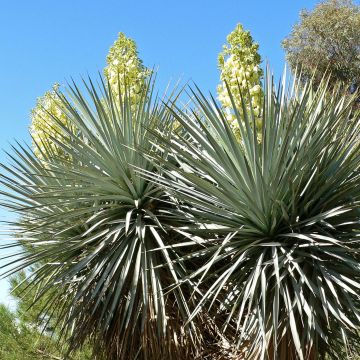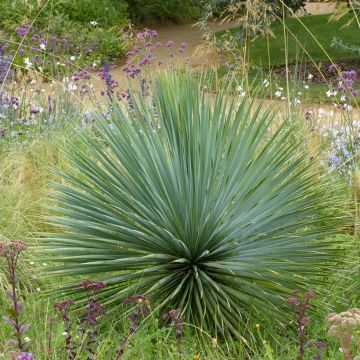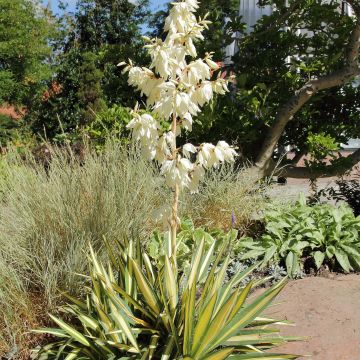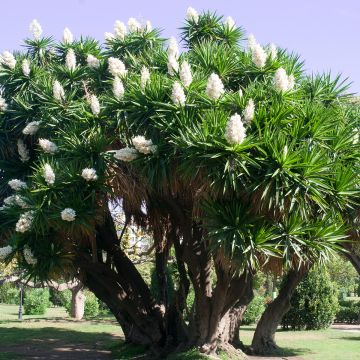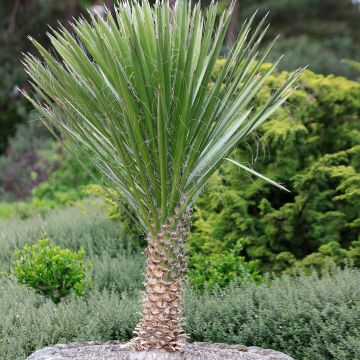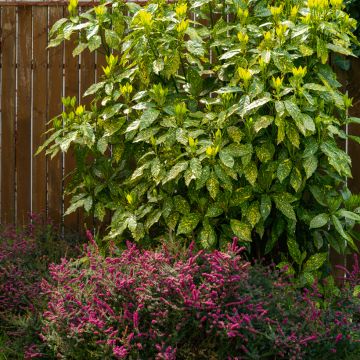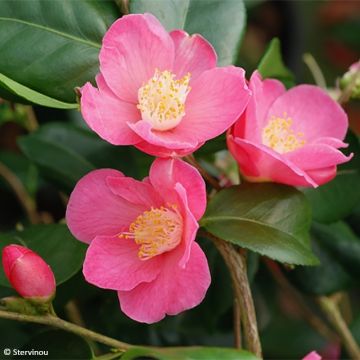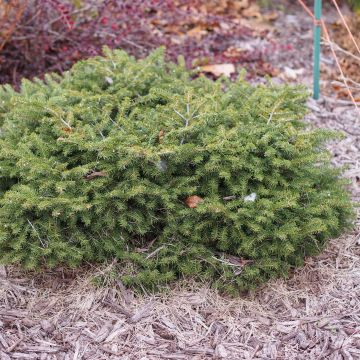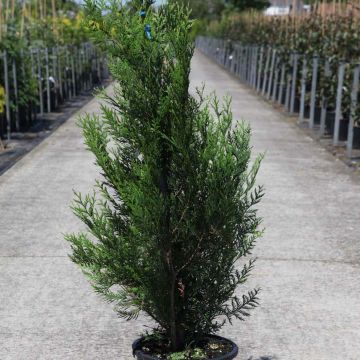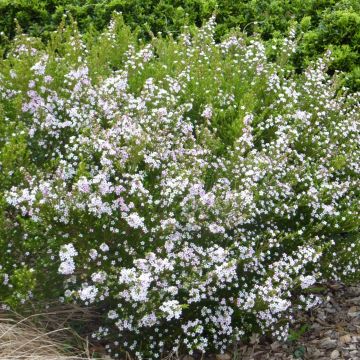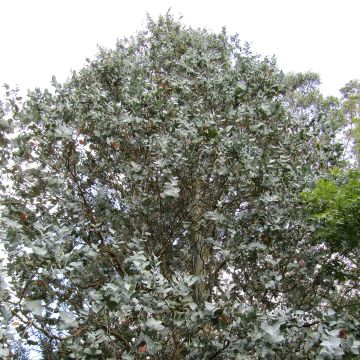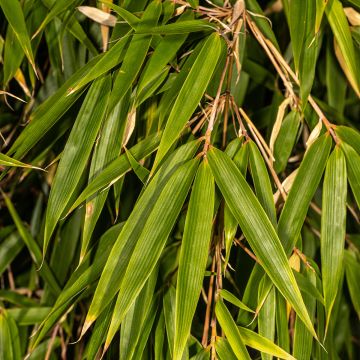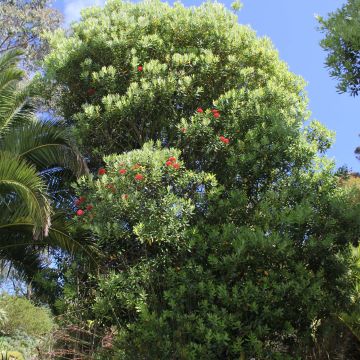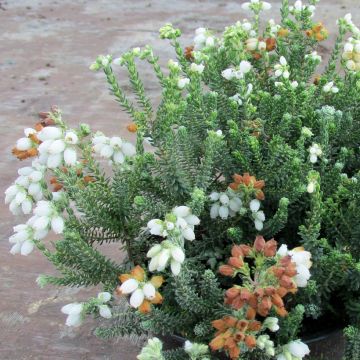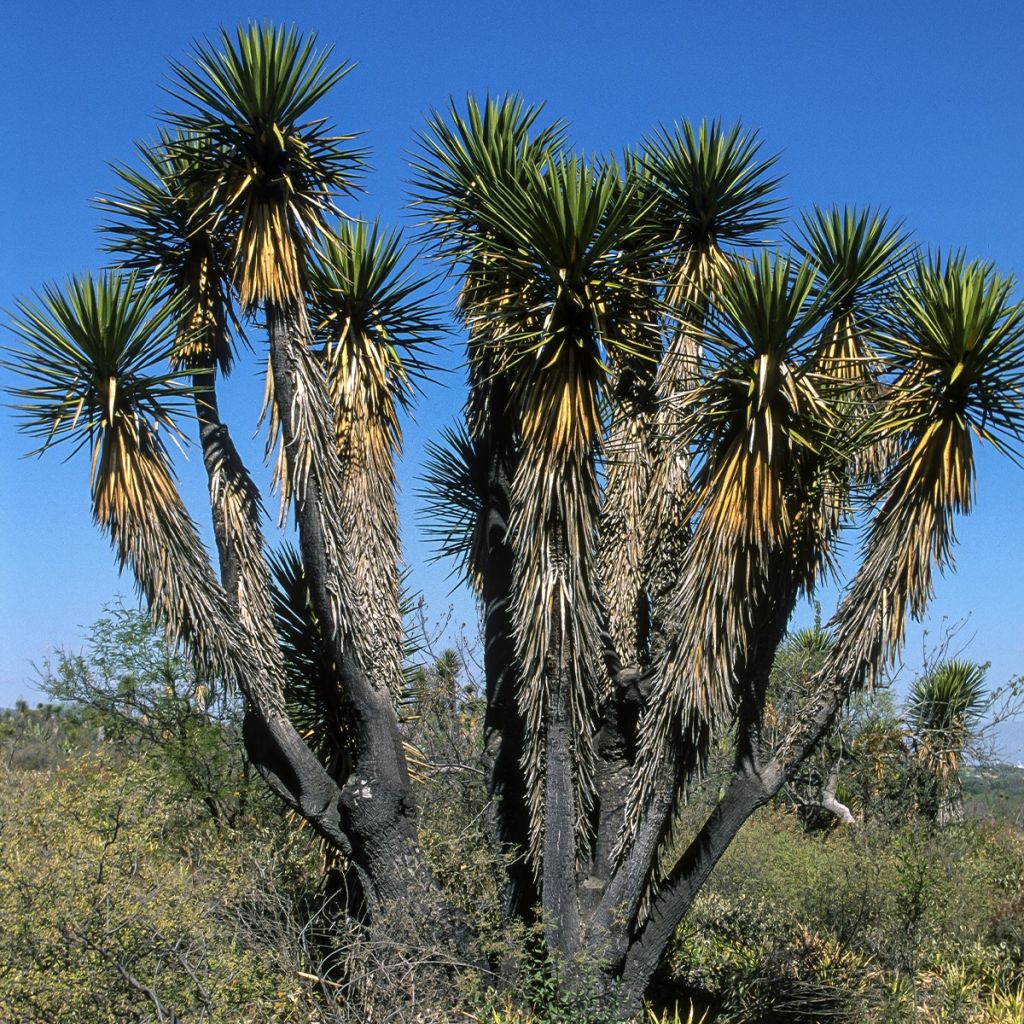

Yucca filifera
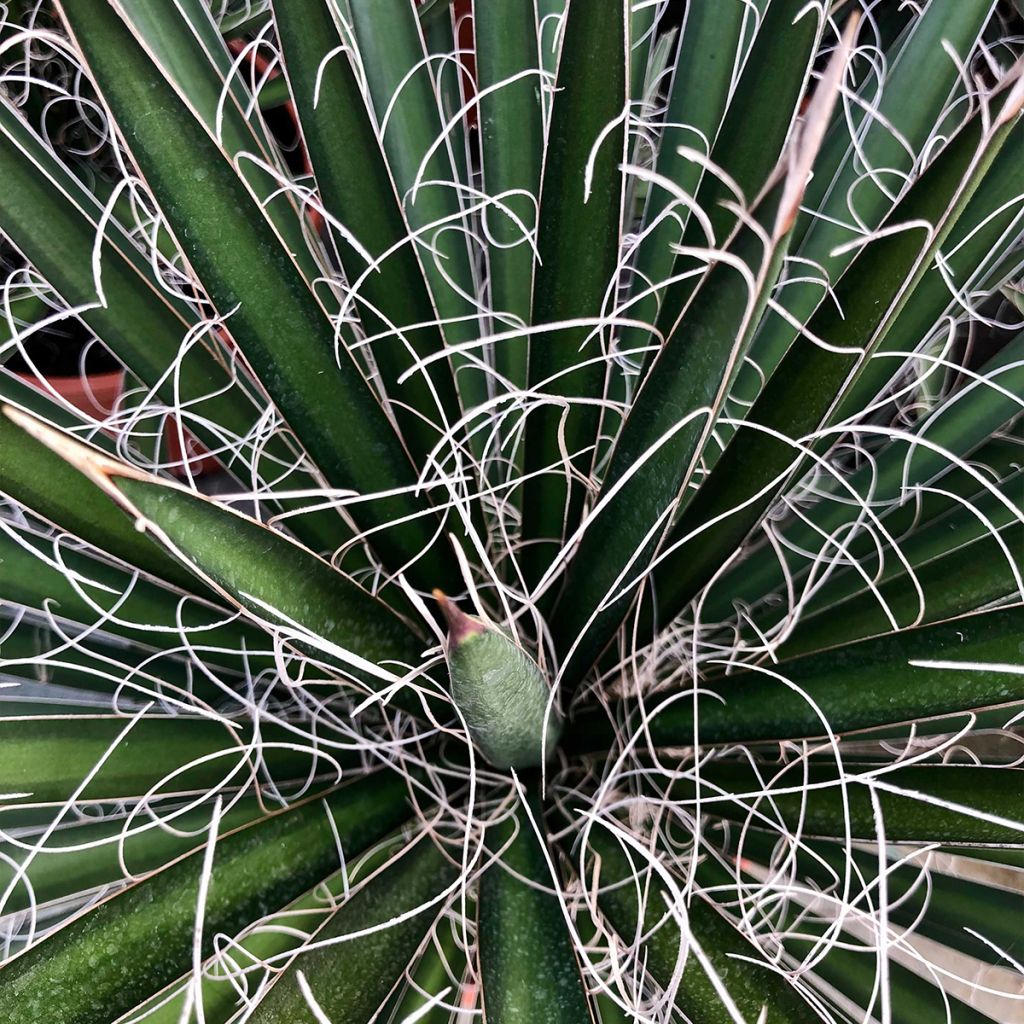

Yucca filifera - Yucca filifère
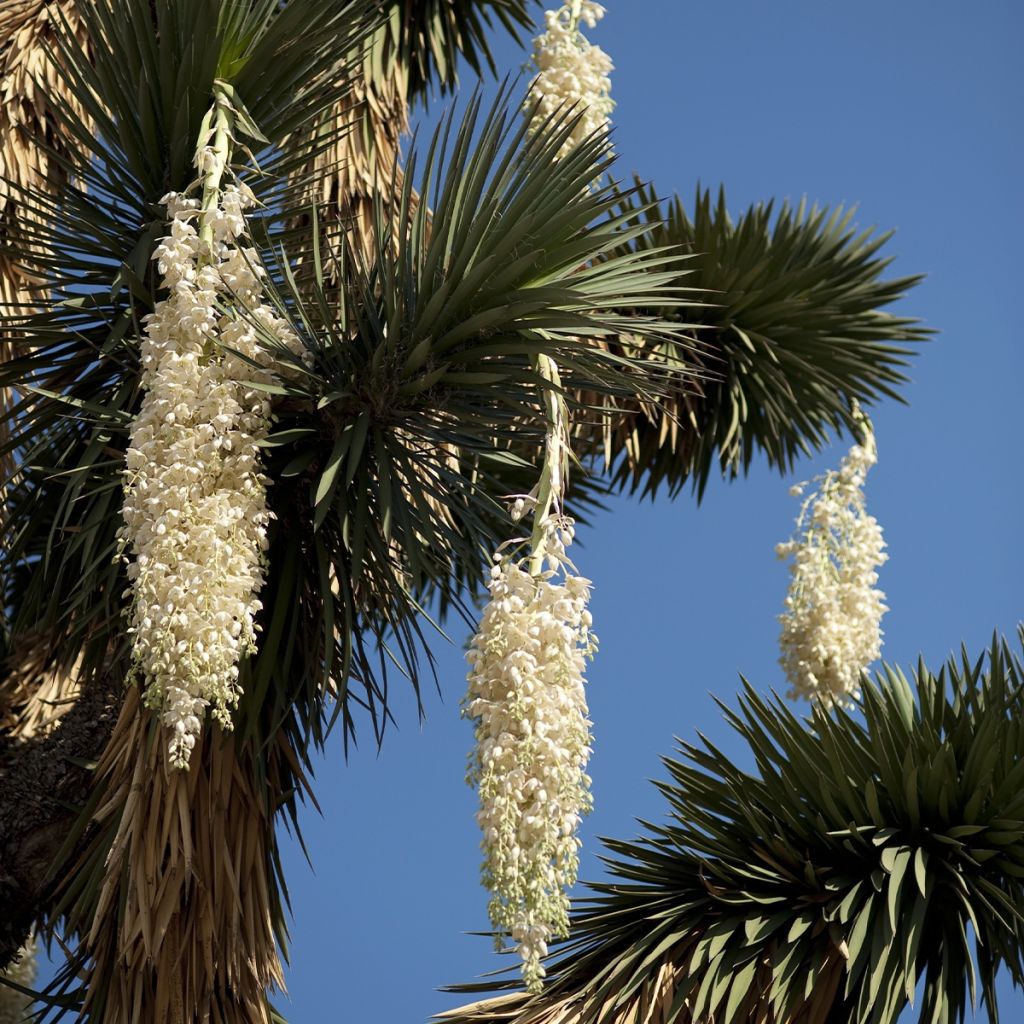

Yucca filifera
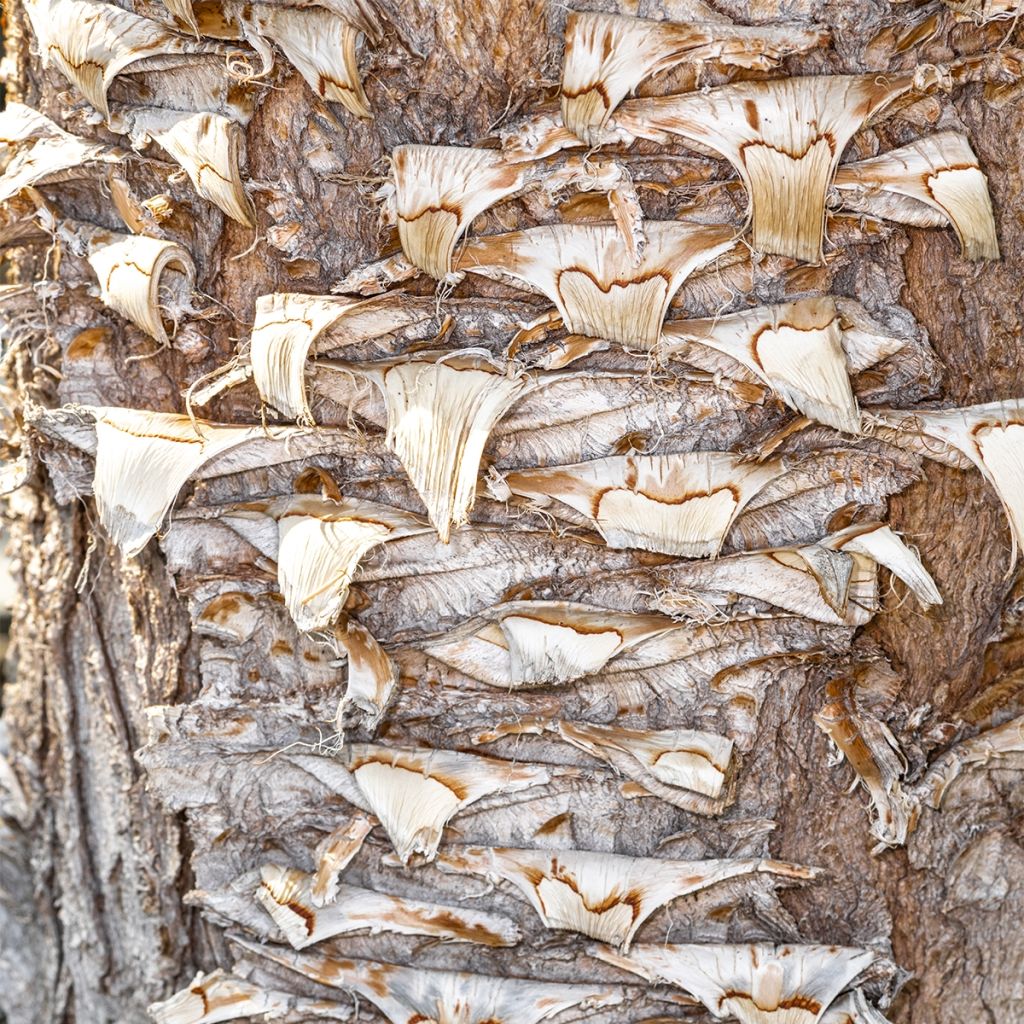

Yucca filifera
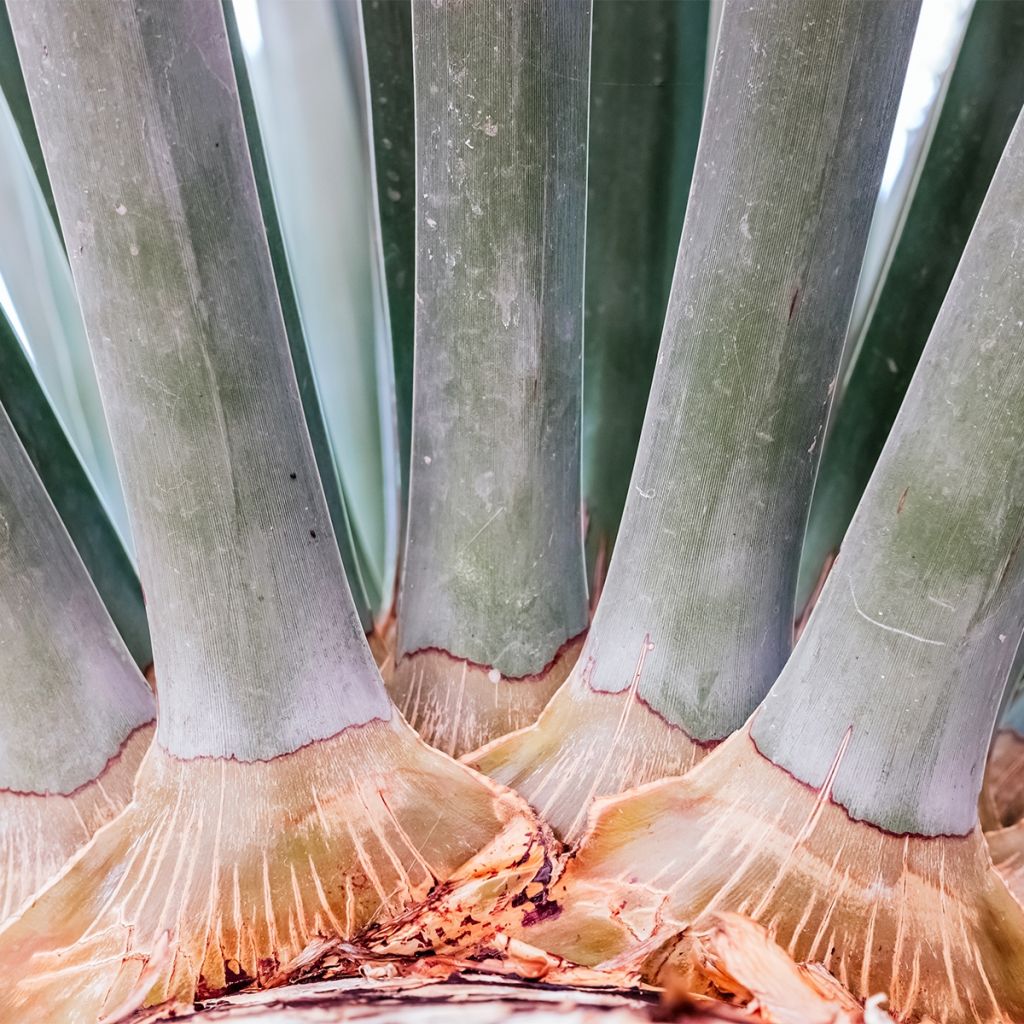

Yucca filifera
Yucca filifera
Yucca filifera
St Peter's Palm, Tree Yucca
This item cannot be shipped to the selected country
Delivery charge from €5.90
More information
Schedule delivery date,
and select date in basket
This plant carries a 24 months recovery warranty
More information
We guarantee the quality of our plants for a full growing cycle, and will replace at our expense any plant that fails to recover under normal climatic and planting conditions.
From €5.90 for pickup delivery and €6.90 for home delivery
Express home delivery from €8.90.
Does this plant fit my garden?
Set up your Plantfit profile →
Description
Yucca filifera, sometimes mistakenly called Yucca australis, forms over time a true small tree with a ramified trunk adorned with stiff leaves gathered in rounded rosettes. This large plant then draws the characteristic silhouette of arborescent yuccas that punctuate the desert landscapes of Mexico. While the foliage of this species is quite classic, its monumental summer flowering, with a trailing and non-upright panicle, allows it to be identified with certainty. The flowers of Yucca filifera resemble large, fully open cream-white tulips and give off a slight lemon scent. Seven years of patience are required to obtain a beautiful specimen in open ground, which is reasonable for this type of plant. Its hardiness (-10 °C (14 °F) in well-drained soil) allows it to be grown inland.
Yucca filifera is a plant of the agave family that should not be confused with Yucca australis, a synonym for Yucca faxoniana, which has broader leaves and grows more slowly. Yucca filifera is endemic to the arid regions of northern and central Mexico, notably the Chihuahua Desert. It thrives at altitudes between 1,000 and 1,500 m (3280 and 4920 ft) in rocky or sandy, well-drained soils. Frosts are occasional, but can drop below -10 °C (14 °F) at times.
Young Yucca filifera plants resemble a rosette of stiff, linear leaves, 2 cm (1 in) wide, with curled filamentous margins, bluish-green in colour, terminated by a sturdy spine. The entire structure measures approximately 90 cm (35 in) in all directions and this vegetation persists throughout winter. After 7 to 8 years, the plant begins to form a trunk, and it grows about 20 cm (8 in) per year under good conditions. The terminal rosette eventually gives rise to a few branches, each carrying a rosette of leaves. Ultimately, this yucca forms a small tree with a chandelier-like silhouette, reaching a height of 10 m (33 ft) and a spread of 4 m (13 ft). The trunks of mature plants have a well-enlarged, swollen base. The fantastic flowering occurs in July-August on mature plants. It takes the form of a large panicle applied along the trunk, sometimes exceeding 2 m (7 ft) in length, directed towards the ground. This spectacular inflorescence carries up to 60 branches, each 70 cm (28 in) long, forming a magnificent panicle. Each branch bears 30 to 50 large, white, star-shaped, slightly fragrant flowers. In Mexico, yucca is pollinated by a nocturnal moth that does not live in Europe. To obtain fruits and seeds, manual pollination will be necessary.
Yucca filifera is an easy-going exotic plant in a rather dry climate and well-drained, but deep soil (it has a developed root system). It is adapted to arid situations and tolerates dry cold well. It is advisable to keep it away from walkways and young children due to its pointed leaves. This plant is perfect for structuring a large rock garden or for brilliantly occupying the centre of an exotic bed. It can be planted alone or associated with Puya, Agave americana, prickly pear cacti, Beschorneria, and other hardy candelabra cacti (Cleistocactus strausii, Cylindropuntia imbricata), all equally undemanding. Cultivating it in pots is quite disappointing as it does not allow this yucca to reach its full potential.
Report an error about the product description
Plant habit
Flowering
Foliage
Botanical data
Yucca
filifera
Agavaeae
St Peter's Palm, Tree Yucca
North America
Other Yucca
Planting and care
Plant Yucca filifera in spring in a very sunny location. In hot and dry climates, it is preferable to plant it in early autumn. An adult specimen can withstand brief freezes of around -10 °C (14 °F). This species does not tolerate excess humidity, especially when combined with cold temperatures: plant it in a very well-drained soil, but deep and loose enough to accommodate its developing root system. However, it is not very picky about the soil pH, which can be slightly acidic or slightly alkaline. This plant can tolerate poor soil, but its growth will be slightly faster in soil that is somewhat fertile. Monitor watering during the first 2 years, especially during hot and dry periods. Remove faded stems.
If your Yucca looks beautiful but it does not flower, it is probably too young. Indeed, it seems that this plant takes time to establish itself and only blooms after many years. Then, depending on the sunlight and climate, it will flower every year, or even every 2 or 3 years.
Propagation:
Yucca can be easily propagated by stem cuttings. It should be noted that plants from cuttings produce fewer roots than plants from seeds, making them susceptible to strong winds and less resistant to drought in hot climates.
Fertilisation in yuccas:
In their countries of origin, Yucca flowers are pollinated only by a few species of tiny primitive moths without proboscises that live in symbiosis with the plant, such as Prodoxus. The female of these moths carries pollen grains from one flower to the pistil of another. She lays a few eggs at the base of the flower. The young caterpillars feed on some of the seeds. Since Prodoxus is not part of our native fauna, most yuccas grown in our gardens never produce fruits. Only Yucca aloifolia is capable of doing so, because its pollination does not depend on the presence of these micromoths.
Planting period
Intended location
Care
This item has not been reviewed yet - be the first to leave a review about it.
Evergreen shrubs
Haven't found what you were looking for?
Hardiness is the lowest winter temperature a plant can endure without suffering serious damage or even dying. However, hardiness is affected by location (a sheltered area, such as a patio), protection (winter cover) and soil type (hardiness is improved by well-drained soil).

Photo Sharing Terms & Conditions
In order to encourage gardeners to interact and share their experiences, Promesse de fleurs offers various media enabling content to be uploaded onto its Site - in particular via the ‘Photo sharing’ module.
The User agrees to refrain from:
- Posting any content that is illegal, prejudicial, insulting, racist, inciteful to hatred, revisionist, contrary to public decency, that infringes on privacy or on the privacy rights of third parties, in particular the publicity rights of persons and goods, intellectual property rights, or the right to privacy.
- Submitting content on behalf of a third party;
- Impersonate the identity of a third party and/or publish any personal information about a third party;
In general, the User undertakes to refrain from any unethical behaviour.
All Content (in particular text, comments, files, images, photos, videos, creative works, etc.), which may be subject to property or intellectual property rights, image or other private rights, shall remain the property of the User, subject to the limited rights granted by the terms of the licence granted by Promesse de fleurs as stated below. Users are at liberty to publish or not to publish such Content on the Site, notably via the ‘Photo Sharing’ facility, and accept that this Content shall be made public and freely accessible, notably on the Internet.
Users further acknowledge, undertake to have ,and guarantee that they hold all necessary rights and permissions to publish such material on the Site, in particular with regard to the legislation in force pertaining to any privacy, property, intellectual property, image, or contractual rights, or rights of any other nature. By publishing such Content on the Site, Users acknowledge accepting full liability as publishers of the Content within the meaning of the law, and grant Promesse de fleurs, free of charge, an inclusive, worldwide licence for the said Content for the entire duration of its publication, including all reproduction, representation, up/downloading, displaying, performing, transmission, and storage rights.
Users also grant permission for their name to be linked to the Content and accept that this link may not always be made available.
By engaging in posting material, Users consent to their Content becoming automatically accessible on the Internet, in particular on other sites and/or blogs and/or web pages of the Promesse de fleurs site, including in particular social pages and the Promesse de fleurs catalogue.
Users may secure the removal of entrusted content free of charge by issuing a simple request via our contact form.
The flowering period indicated on our website applies to countries and regions located in USDA zone 8 (France, the United Kingdom, Ireland, the Netherlands, etc.)
It will vary according to where you live:
- In zones 9 to 10 (Italy, Spain, Greece, etc.), flowering will occur about 2 to 4 weeks earlier.
- In zones 6 to 7 (Germany, Poland, Slovenia, and lower mountainous regions), flowering will be delayed by 2 to 3 weeks.
- In zone 5 (Central Europe, Scandinavia), blooming will be delayed by 3 to 5 weeks.
In temperate climates, pruning of spring-flowering shrubs (forsythia, spireas, etc.) should be done just after flowering.
Pruning of summer-flowering shrubs (Indian Lilac, Perovskia, etc.) can be done in winter or spring.
In cold regions as well as with frost-sensitive plants, avoid pruning too early when severe frosts may still occur.
The planting period indicated on our website applies to countries and regions located in USDA zone 8 (France, United Kingdom, Ireland, Netherlands).
It will vary according to where you live:
- In Mediterranean zones (Marseille, Madrid, Milan, etc.), autumn and winter are the best planting periods.
- In continental zones (Strasbourg, Munich, Vienna, etc.), delay planting by 2 to 3 weeks in spring and bring it forward by 2 to 4 weeks in autumn.
- In mountainous regions (the Alps, Pyrenees, Carpathians, etc.), it is best to plant in late spring (May-June) or late summer (August-September).
The harvesting period indicated on our website applies to countries and regions in USDA zone 8 (France, England, Ireland, the Netherlands).
In colder areas (Scandinavia, Poland, Austria...) fruit and vegetable harvests are likely to be delayed by 3-4 weeks.
In warmer areas (Italy, Spain, Greece, etc.), harvesting will probably take place earlier, depending on weather conditions.
The sowing periods indicated on our website apply to countries and regions within USDA Zone 8 (France, UK, Ireland, Netherlands).
In colder areas (Scandinavia, Poland, Austria...), delay any outdoor sowing by 3-4 weeks, or sow under glass.
In warmer climes (Italy, Spain, Greece, etc.), bring outdoor sowing forward by a few weeks.

































